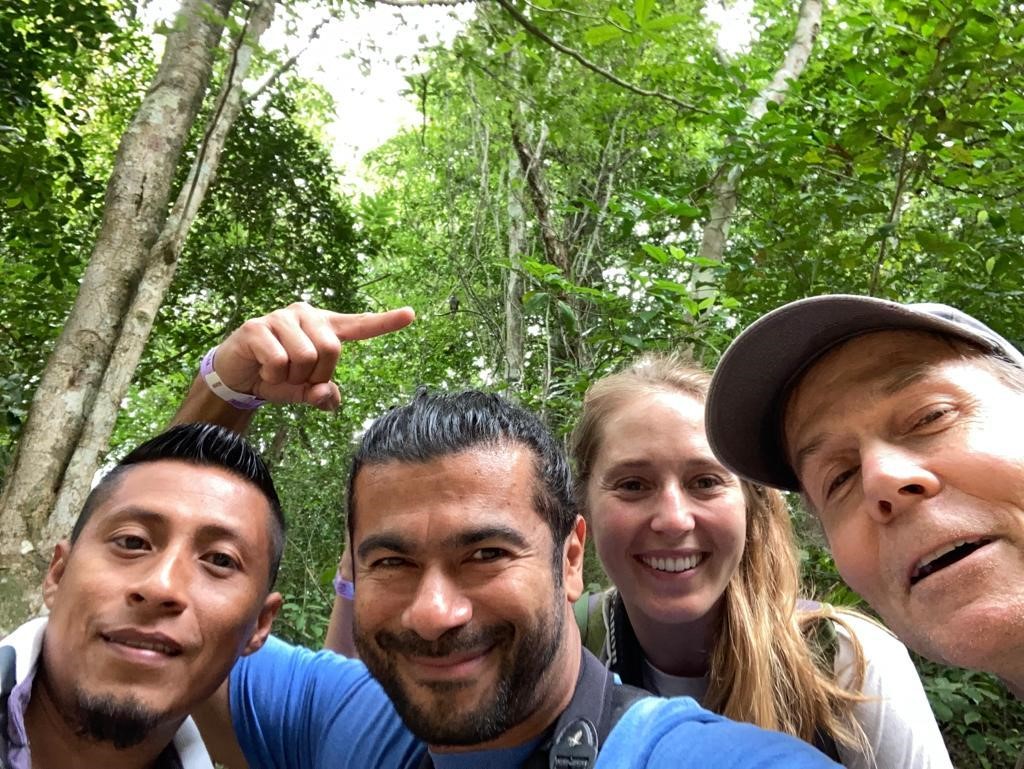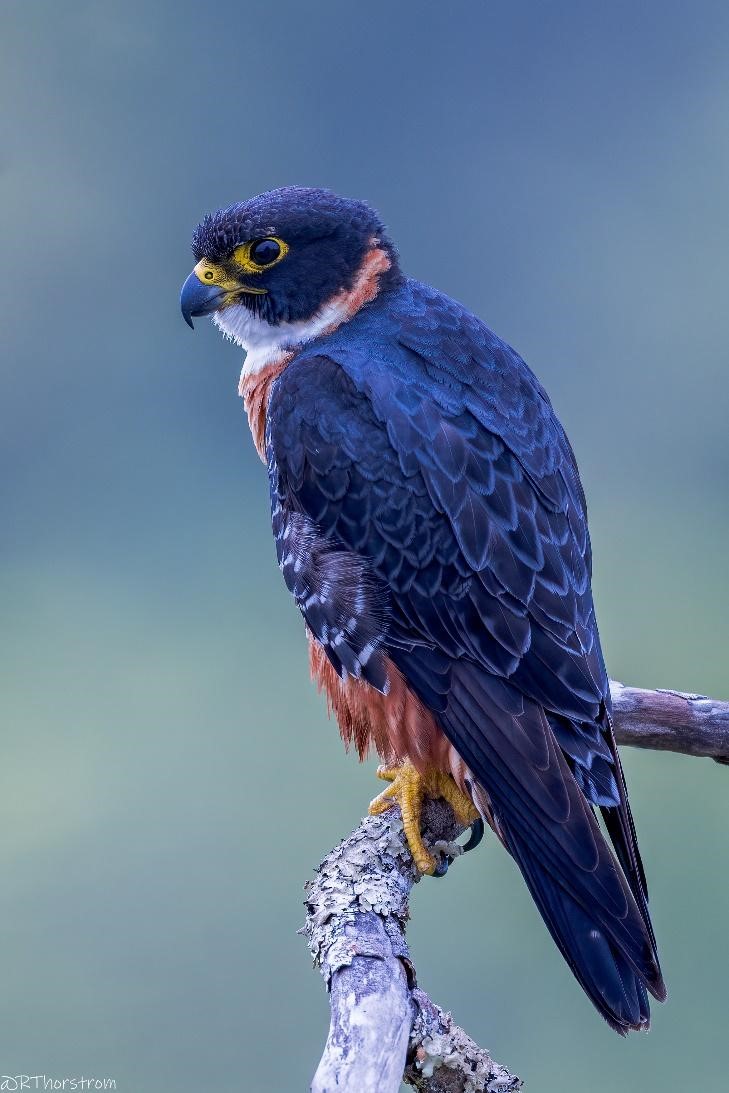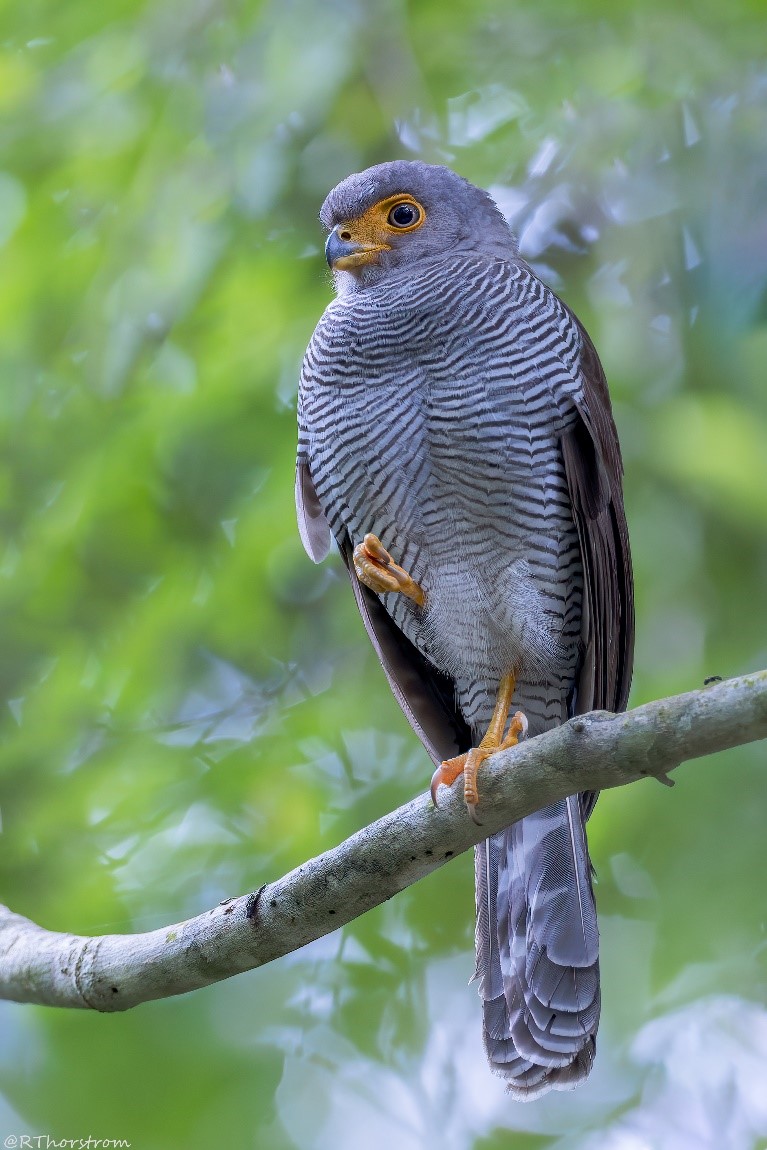The expedition team including, Andrea Aquilera, Russell Thorstrom, Julio Gallardo, and Hana Weaver.
Recently Hana Weaver (Puerto Rican Sharp-shinned Hawk Project Director), Julio Gallardo (Puerto Rican and Aplomado Falcon Consultant), and Russell (Conservation Director of Madagascar and West Indies Projects) visited Tikal National Park (a UNESCO World Heritage site that encompass 575 km2 of tropical lowland forest and the ancient Mayan ruins) in northern Guatemala. Beginning in 1988, Peregrine Fund Past Presidents, Bill Burnham and Pete Jenny had selected Tikal as the site for The Peregrine Fund’s Maya Project: an investigation of raptors and their habitats as environmental indicators for preserving biodiversity and tropical forests of Latin America. It had been more than 30 years ago that Russell worked on the project as a field assistant and completed his master’s degree with The Peregrine Fund and Boise State University, Boise, Idaho.
The 63-kilometer drive from the Mundo Maya International Airport to Tikal National Park entrance had changed drastically from 30 years ago with a shopping center across from the airport, small houses, tiendas (family stores), and private cattle ranches all along the route. The towns of El Cruce, Remate, and El Caobo had grown substantially. Many of the local Guatemalans that worked on the Maya Project came from these small communities. The park entrance had a large colorful structure over the road and a substantial swinging metal gate to control and check all persons entering the park. The forest along the 18 kilometer drive from the park entrance to Tikal center hadn’t changed in structure and all vehicles are required to drive at 45 kph in order to protect wildlife from car collisions.
The team of three spent several full days at Tikal admiring the ruins and looking for raptors, birds, and other wildlife. This was Hana’s first visit to Tikal and she was captivated by the rich biodiversity surrounding the ancient Mayan ruins. The diversity of raptor species in Tikal was truly impressive, not only in the number of unique species, but the density of breeding raptors within the park. She recalled, “a particularly memorable moment atop one of the temples as a Barred Forest Falcon called from the forest below, Plumbeous Kites coursed above the canopy, and just behind her a female Orange-breasted Falcon “ee-chupped” softly to her mate who had recently delivered a prey item.” Beyond the raptors and echoing calls of howler monkeys, she was also moved by the lasting impact that The Peregrine Fund had made on the people and communities surrounding Tikal which was evident in the bright and passionate stories of park guides, as they explained the work of The Peregrine Fund to visitors, and always, with a particular glimmer of excitement when they mentioned Russell’s name.
Standing in the ruins of the central plaza and on Temple 4 brought back many memories and feelings for Russell, and fortuitously he had the opportunity to meet up with three Guatemalans that had worked on the Maya Project 30 years ago. The tropical forest in and around the ruins hadn’t changed and was the same as during the Maya Project years showing the control the park has with tourism while preserving the tropical forest. For two days they were joined by Guatemalan biologist Andrea Aguilera, who is monitoring the Orange-breasted Falcons in northern Guatemala, and Esdras Luiz Garcia a park biologist. We were able to see several raptor species including the striking Orange-breasted Falcon and the secretive Barred Forest Falcon. The days the team spent in Tikal went by so quickly that they wished they had more time to wander around searching for raptors and other wildlife in this mystical place.










